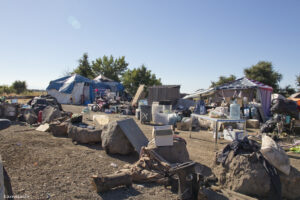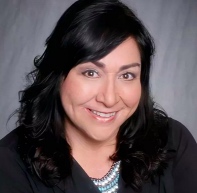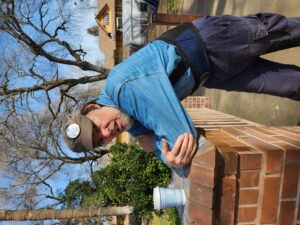by Natalie Hanson
posted July 24
With no city-wide plan for extreme heat in place, Chicoans have few resources to fall back on during dangerous heat waves like the one last week. Like much of California, the City now often faces stretches of days with high temperatures topping 100 or even 110 degrees.

Extreme heat threatens vulnerable residents across the state — including thousands of farm workers toiling in the heat, low-income residents in poor-quality housing and thousands of unhoused people with few options for safe shelter. But Chico does not have a long term plan for managing extreme temperatures.
Panel experts at a recent Ethnic Media Services briefing said that cities need to be prepared to face extreme heat, both in city planning and with emergency public health measures.
Mixteco Indigenous Community Organizing Project founder Sandra Young said that rural areas facing extended periods of heat see higher risk for unhoused and unstable populations alike, including migrant farm workers.
Many workers toil in fields in direct sunlight, covered head to toe to avoid toxic chemicals, Young said. Others work in hot, enclosed tents to harvest raspberries and tomatoes, and few fields offer sufficient water within close walking distance.

Many workers are undocumented, unlikely to speak out to demand their rights to breaks and water for fear of losing their employment.
The City of Los Angeles now has a chief heat officer and Climate Emergency Mobilization Office director, Marta Segura. She said low-income community members, whether sheltered or not, are particularly vulnerable to heat because they are more likely to live without cooling or in buildings more susceptible to high temperatures. They are also more likely to be outdoors and in unshaded areas during the highest temperatures of the day.

V. Kelly Turner, associate director of Urban Environmental Research at the University of California, Los Angeles, said it’s time for cities to rely on extreme heat research to improve planning public and private spaces for a hotter future.
She said that how cities are built, from materials to building design, can increase the “urban heat island effect,” increasing indoor temperatures.
Neighborhood infrastructure is key, Turner said. Shade infrastructure, from awnings and tarps to planted trees, is important to reduce sunlight exposure and important to community equity.
The state could also make some changes to policy, such as better regulating standards for homes and buildings that are sold and leased. “It’s perfectly legal to rent a home that is too hot,” she noted.
Where’s the emergency plan?
Unfortunately, such strategies are not always laid out in an official plan in many cities, even those lying in high-risk inland areas like Chico.
Chico State geology professor Mark Stemen, formerly of the City’s Climate Action Commission, said the City has spent years suffering through worsening heat waves while refusing to move forward with a drafted heat action plan that was dropped in 2020.
Climate change will worsen the swings between drought and record-breaking heat to wet seasons of flooding, Stemen warned. Extreme heat is intensifying each year, as witnessed in four consecutive, global, record-setting days that took place during the Independence Day weekend holiday.
“We knew this was coming -– we modeled this when we created the 2018 climate vulnerability assessment for the City of Chico,” Stemen said. “What we don’t have is an extreme heat plan.”
The Sustainability Task Force began meeting with the county to craft an extreme heat plan in 2018, but just before the Camp Fire, the county pulled out. The City then began crafting its own plan, which the Chico City Council sent to the Internal Affairs committee, which stopped meeting when the COVID-19 pandemic hit, he said.
” … the City of Chico is projected to experience an increase in annual average temperatures, with nighttime temperatures increasing at a faster rate than daytime temperatures, and an increase in the number of extreme heat days …”, says the draft City plan referring to a climate projection model developed at the University of California, Berkeley.

With no heat plan underway, Stemen said Chicoans have fewer resources to fall back on during dangerous heat waves. Humans need to get into an environment of 78 degrees for at least three hours per day, or they may get heat stroke, he said. That is why a City cooling center with misters, only open during peak daylight hours on days that exceed 100 degrees, isn’t sufficient.
“Extreme heat kills more people on average a year than all other natural disasters a year,” he said.
In the first weeks of July, pressure built on City officials as temperatures climbed, from advocates for unhoused people, the political organization Stand Up For Chico and citizens alike.
Volunteers step up
Advocates like Charles Withuhn are trying to help unhoused people in Chico by bringing bottled water to prevent heatstroke. Withuhn said the heat today wasn’t “life-threatening like it was a week ago, but it’s still damn hot.”

The City this year established a sanctioned outdoor site for people to go to as part of a lawsuit settlement -– but the site at Cohasset and Eaton does not have a water system or shade structure.
“I think it is shameful that we as a community and the City have a campground without providing water or shade, in the kind of environment that we find ourselves in,” Withuhn said. “If you left a dog on that property, it would be animal cruelty. We call it Camp Misery.”
Withuhn and other local volunteers donate water, clothes and food each week. Volunteers include Gianni Caponera, who told the Butte County Shelter for All Group last week that “I’ve been trying to run out there daily with some water.”
“They lost their only source of drinking water when the church across the street was fenced off,” Caponera said. “I guess the City expects the water in the single hand-washing station to double as drinking water.”
What’s open now?
After the City came under mounting pressure from local organizations, City Manager Mark Sorensen said in a July 13 email to the City Council that the City would deliver “water totes” for one week. “For a longer-term solution, public works is discussing with CalWater the concept of adding a service meter on site with a campground style valve,” he wrote.
The City of Chico did not responded to ChicoSol’s request for further comment.
Safe Space, a nonprofit that receives some City funding, is operating cooling centers open 2 p.m. to 8 p.m. through Aug. 19. These will be open July 23–Aug. 5 at Faith Lutheran Church on 667 East 1st Ave. and Aug. 6–Aug. 19 at Bidwell Presbyterian Church on 208 West 1st St.
More information is on the Safe Space website or by calling 211.
Natalie Hanson is a contributing writer to ChicoSol.

I have 1-5 gallon containers I can fill & refill if there someone could pick up drop off.
Talk to me. Charles Withuhn North State Shelter Team 530.518.1417